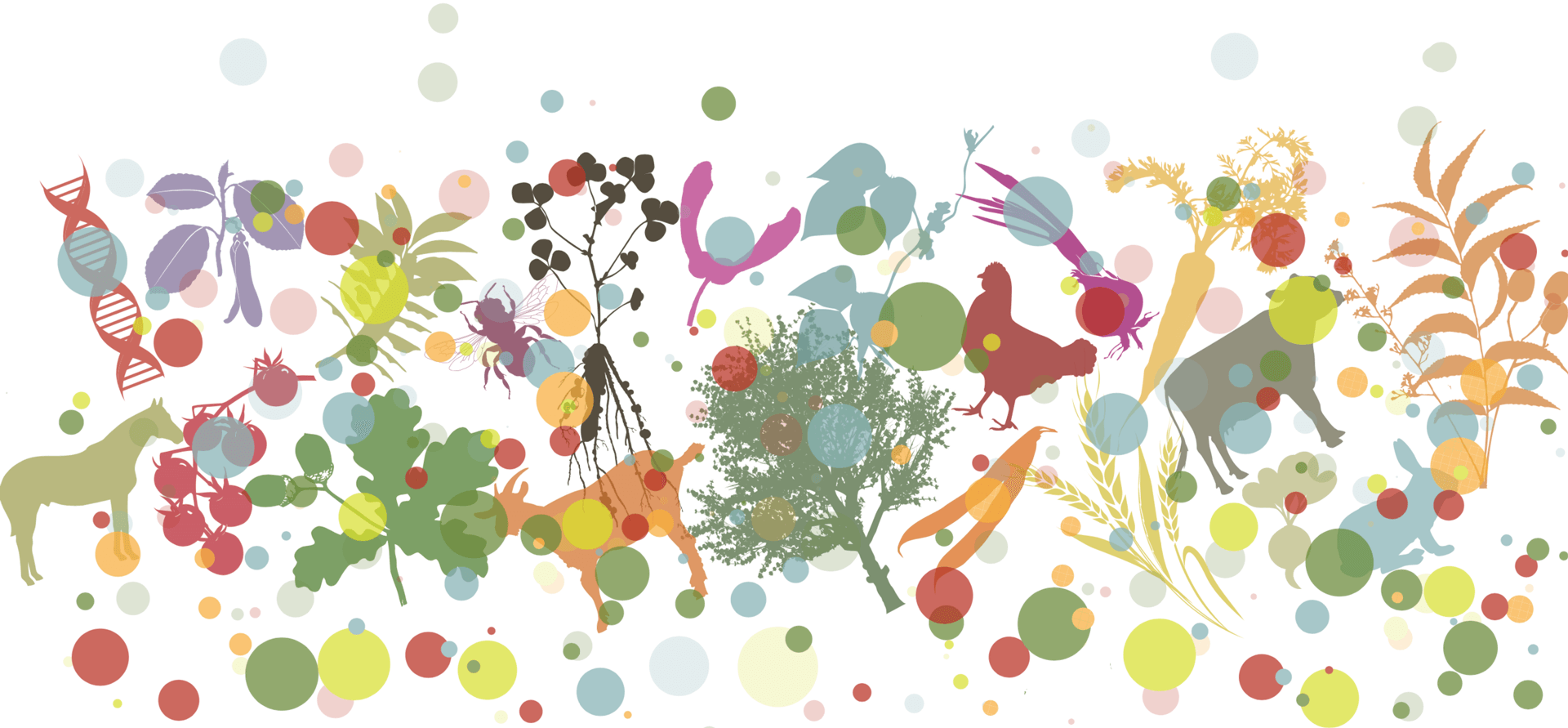Estimation of genetic erosion on Ethiopian tetraploid wheat landraces using different approaches
Main Article Content
Abstract
The demand and use of improved crop varieties by farmers has increased in the central highlands of Ethiopia, where continuous loss of local traditional varieties has been occurring in the last two to three decades. The objectives of the study were to assess the extent of genetic erosion and perception of farmers and associated causes for the reduction of traditional farmers' varieties. Direct field assessment covering 56 wheat farms and a survey in which 149 farmers participated were carried out in three districts of central Ethiopia. Based on data collected during direct farm assessment, the loss of genotypes was found to be 88% in Ada followed by 80% and 60% in Lume and Gimbichu districts, respectively. The farmer survey indicated an even greater loss of diversity of100% in Ada followed by Lume (93%) and Gimbichu (67%). Diseases and pests as well as shorter growing seasons associated with climate change were identified as main causes for farmers to switch to modern varieties. The expansion of high yielding improved bread and durum wheat varieties also contributed to gradually replace local durum wheat varieties by local farmers of these districts. Overall, genetic erosion of tetraploid wheat varied among the three districts of central Ethiopia. Reductions in the number of farmers and area coverage in the study districts could be used as good indicators for the existence of genetic erosion.
Article Details
Authors retain copyright of the articles published in Genetic Resources and grant the journal right of first publication with open access. All articles published in Genetic Resource are licensed under Creative Commons Attribution 4.0 International License (CC BY 4.0) that allows others to download, share and adapt the work for commercial and non-commercial purposes as long as proper attribution to the original article is given. Genetic Resources permits and encourages authors to post items submitted to the journal (including the publisher's final layout) on personal websites or institutional repositories after acceptance and/or publication, while providing bibliographic details that credit their publication in Genetic Resources.
Assefa, K et al. (2015). “Genetic diversity in tef [Eragrostis tef (Zucc.) Trotter]”. Frontiers in Plant Science 6. DOI: https://doi.org/10.3389/fpls.2015.00177.
Bechere, E, H Kebede, and G Belay (2000). Durum wheat in Ethiopia: an old crop in an ancient land. Addis Ababa: Institute of Biodiversity Conservation and Research.
Berg, T. (2009). “Landraces and folk varieties: a conceptual reappraisal of terminology”. Euphytica 166, pp. 423–430. DOI: https://doi.org/10.1007/s10681-008-9829-8.
Bishaw, Z, P C Struik, and A J G Van Gastel (2014). “Assessment of on-farm diversity of wheat varieties and landraces: Evidence from farmer’s fields in Ethiopia”. African Journal of Agricultural Research 9(39), pp. 2948–2963. DOI: https://doi.org/10.5897/AJAR2013.7574.
Brown, A H D and T Hodgkin (2015). “Indicators of Genetic Diversity, Genetic Erosion, and Genetic Vulnerability for Plant Genetic Resources”. In: Genetic Diversity and Erosion in Plants. Sustainable Development and Biodiversity. Ed. by M Ahuja and S Jain. Vol. 7. Cham: Springer. DOI: https://doi.org/10.1007/978-3-319-25637-5_2.
Central Statistical Agency (2017). “Agricultural Sample Survey 2016/17, Area and Production for Major Crops. Private Peasant Holdings”. In: Statistical Bulletin No 584. Vol. 1. Addis Ababa, Ethiopia.
Eticha, F, G Belay, and E Bekele (2006). “Species diversity in wheat landrace populations from two regions of Ethiopia”. Genet Resour Crop Evol 53, pp. 387–393. DOI: https://doi.org/10.1007/s10722-004-6095-z.
FAO/IPGRI (2002). Review and development of indicators for genetic diversity, genetic erosion and genetic vulnerability (GDEV): summary report of a joint FAO/IPGRI workshop. Rome.
Gashawbeza, B et al. (2003). “Fertilizer N Effects on Yield and Grain Quality of Durum Wheat”. Tropical Agriculture 80, pp. 146–151.
Geleta, N and H Gausgruber (2013). “On-Farm Diversity and Genetic Erosion of Tetraploid Wheat Landraces in Ambo and Dandi Districts, West Shewa, Ethiopia”. Science, Technology and Arts Research Journal 2(1), pp. 1–9.
Hammer, K et al. (1996). “Estimating genetic erosion in landraces - two case studies”. Genet Resour Crop Evol 43, pp. 329–336. DOI: https://doi.org/10.1007/BF00132952.
Mengistu, D K et al. (2016). “Genetic diversity in Ethiopian Durum Wheat (Triticum turgidum var durum) inferred from phenotypic variations”. Plant Genetic Resources: Characterization and Utilization 16(1), pp. 39–49. DOI: https://doi.org/10.1017/S1479262116000393.
Negatu, W, W Mwangi, and T Tesema (1992). “Farmers’ Varietal Preferences for Durum wheat in Ada, Lume and Gimbichu Woredas”. Ethiopian Journal of Agricultural Science (Ethiopia) 13, pp. 89–100.
Teklu, Y and K Hammer (2006). “Farmers’ perception and genetic erosion of tetraploid wheat landraces in Ethiopia”. Genet Resour Crop Evol 53, pp. 1099–1113. DOI: https://doi.org/10.1007/s10722-005-1145-8.
Tesema, T (1991). “Research Recommendations and Future Strategies of the Ethiopian Durum Wheat Improvement Program”. In: Wheat Research in Ethiopia A Historical Perspective. Ed. by H Gebre-Mariam, D G Tanner, and M Mengistu Hulluka. Addis Ababa: IAR/CIMMYT, pp. 164–170.
Tsegaye, B and T Berg (2007). “Genetic erosion of Ethiopian tetraploid wheat landraces in Eastern Shewa, Central Ethiopia”. Genet Resour Crop Evol 54, pp. 715–726. DOI: https://doi.org/10.1007/s10722-006-0016-2.







 This journal has been conceived as part of the
This journal has been conceived as part of the